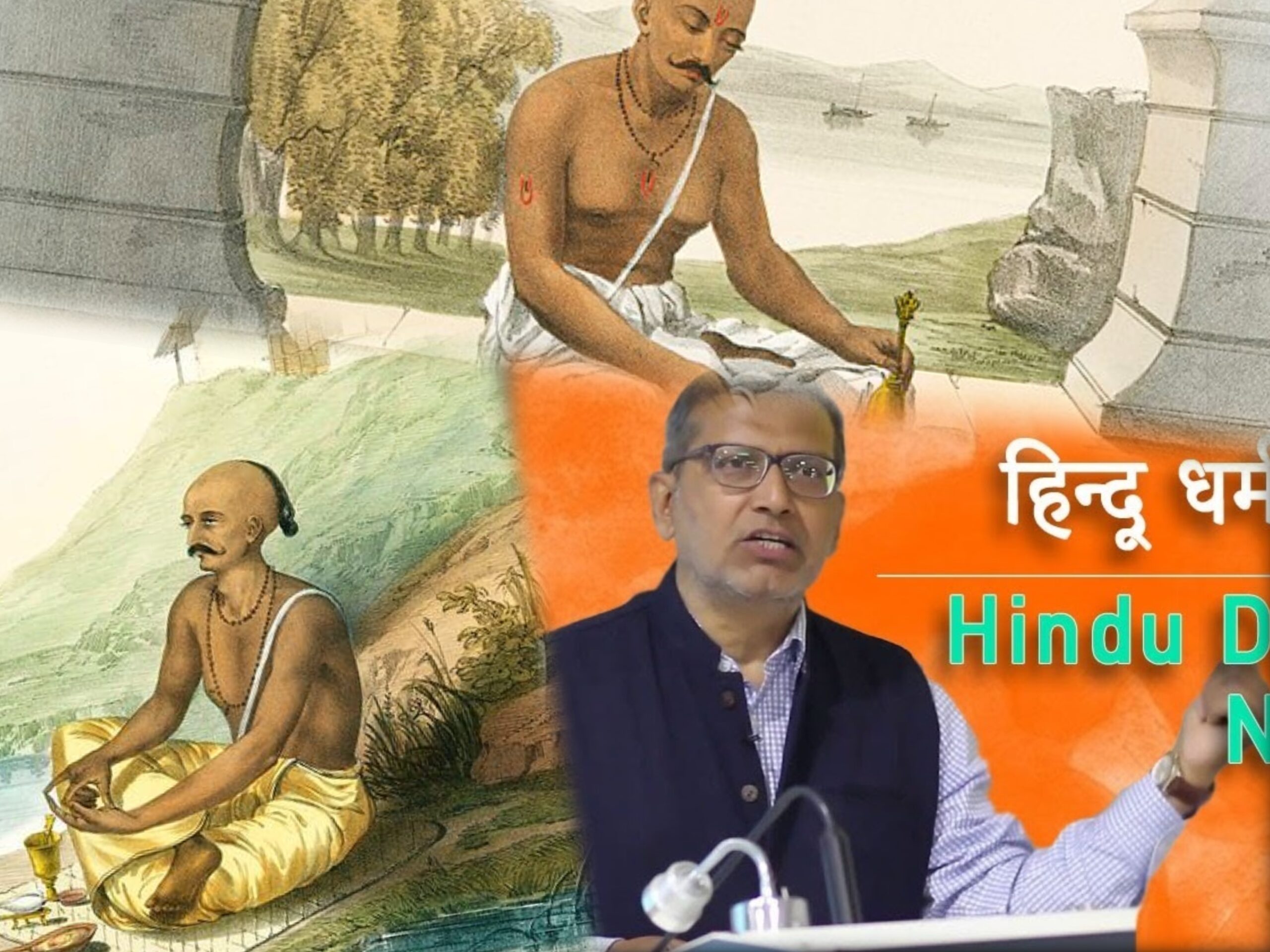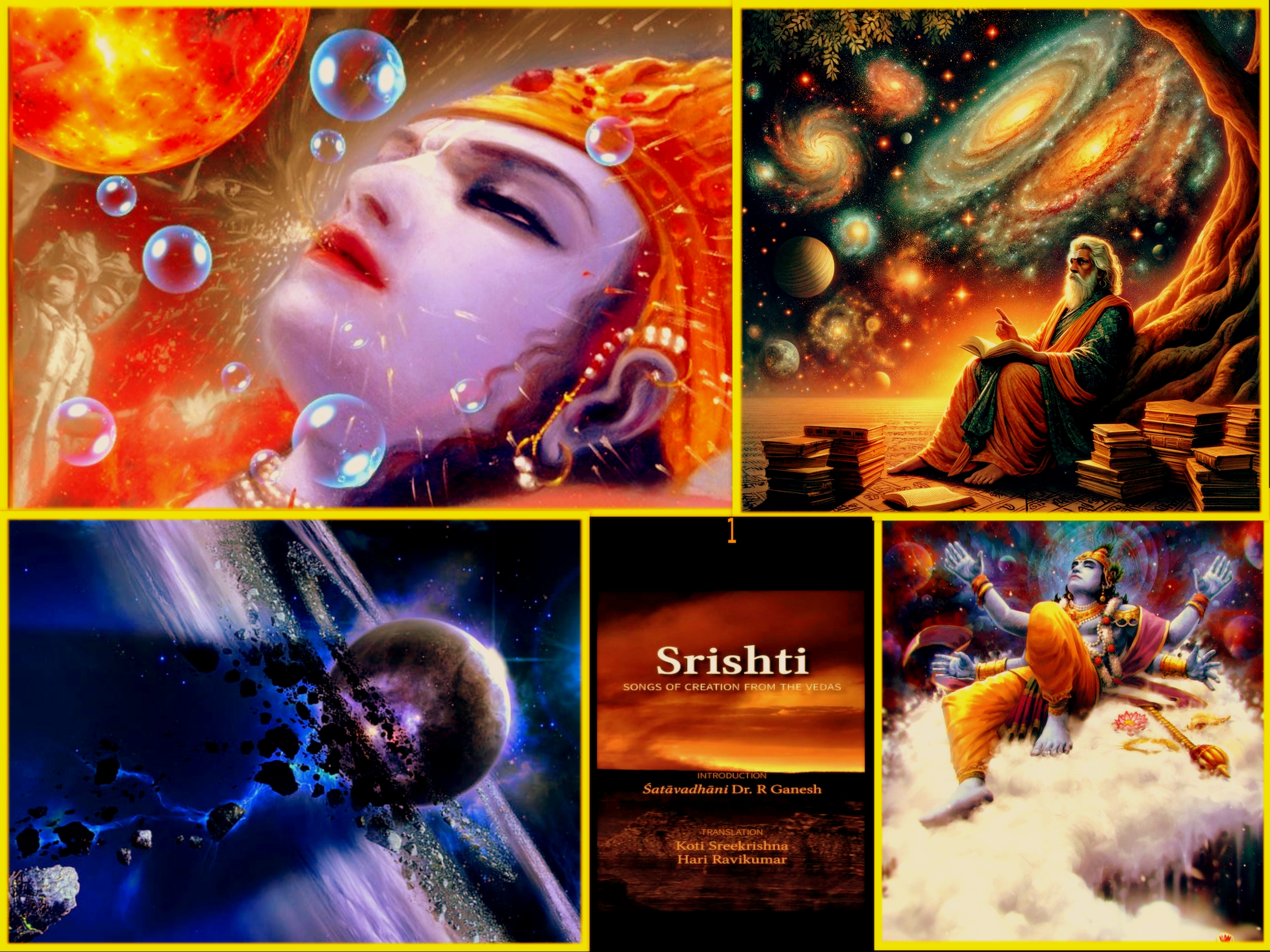- Visitor:50
- Published on:
Vilifying Brahmans for Untouchability
Foreigners began giving wrong explanations of Hindu ideas and adding false information to it rather wittingly or unwittingly. Church missionaries played a very great role in it. Then, in independent India political parties selfishly misused the same propaganda, in fact they increasingly popularised the propaganda. Authentic information and facts were also suppressed, because they were unfavourable to their party-interests. Like this, they turned one section of Hindus inimical towards the other section of Hindus at their own hands.

Foreigners began giving wrong explanations of Hindu ideas and adding false information to it rather wittingly or unwittingly. Church missionaries played a very great role in it. Then, in independent India political parties selfishly misused the same propaganda, in fact they increasingly popularised the propaganda. Authentic information and facts were also suppressed, because they were unfavourable to their party-interests. Like this, they turned one section of Hindus inimical towards the other section of Hindus at their own hands.
Whereas the vocabulary like touchability-untouchability is very recent. It was only after Islamic invasions and forming-settling of a Muslim community in India that this practice came into existence. Before this it was not found in popular conduct. It is necessary that in-depth and proper research takes place about untouchability at this stage but for the objective of white-washing Islamic history any serious academic study of that period is discouraged. Instead a Hindu-vilification project began, an example of which is blaming Vedas and Manusmriti for untouchability.
In reality, the Rajyoga includes only Yama-Niyama. That is, maintaining both internal and external cleanliness. Therefore, Hindus keep some places inviolable and sacrosanct and avoid many things. Along with outsiders it also includes their conduct with family members. Foreigners label as untouchability numerous practices like not eating defiled or ort meal, not entering the kitchen before bathing, on coming from outside washing hands and feets properly before taking a seat or touching anything, removing
shoes-slippers outside the house, etc. Many Hindus used to be Swapakis, that is they used to eat food that was cooked by themselves alone. Great poet Suryakant Tripathi ‘Nirala’ is a contemporary example. This was a self-disciplinary practice. But looking at Hindu practices from a foreign lens makes them synonymous to untouchability.
Otherwise also, untouchability does not find a place in Hindu society as a social behaviour. This has strong evidence in the eye-witness accounts of foreign travellers, which they wrote after staying in India. From Megasthenes of the 3rd century B.C. to Hsuan Tsang, Al Biruni, Ibn Battuta, and Charles Bernier of the 17th century we find a description of two thousand years of Indian public life. They have mentioned very
peculiar and small details about Hindu society. But nobody found untouchability here.
We also have a great literature consisting of observations by local scholars. Renowned philologist and writer of 11 volumes of ‘Encyclopedia of Hinduism’ , Professor Kapil Kapoor has evaluated 1000 years of Bhakti literature of India. He found that most Bhakti saints were not Brahmans or Savarnas. But they were venerated by the entire Hindu society. These poets pointed towards many of our social weaknesses. But none of them mentioned untouchability.
However, some communities living separately owing to their different lifestyles and eating habits do find a mention. But only for these reasons, not due to any sort of coercion. Even today forest-dwelling communities, fishermen, or even some non-vegetarian communities prefer to live in their own localities.
In fact, today vegetarian and satvik eating habits of Hindus are weaponised against them. In many areas some communities purposely and knowingly cook cow-meat to hurt Hindu sentiments and force them out of the localities. This trend has been observed in innumerable cities from Jammu to Mysore. In Delhi alone more than three dozen colonies have been vacated by Hindus due to such targeted attacks.
But this is never discussed and if someone does raise this issue he is blamed for being intolerant of someone’s food habits.
Hence, from Shastras to present times, all examples signal towards cleanliness in Hindu way of life. However, in Mahabharata Ashwathama a Brahman was called ‘untouchable’ because he murdered the sons of Pandavas while they were asleep. The practice of excommunicating anyone from the jaati for committing some extreme wrong exists even today.
The recent form of untouchability came into existence only because of the terrifying destruction of Hindu civilization due to Islamic attacks. Innumerable Hindus who were victims of Islamic incursionists were subjected to contempt by their society.
Unimaginable persecution and genocide of Brahmans at various places deprived Hindus of their convenient lives and guidance. Many could just imagine and think of somehow saving their Dharma and families. After continued threatening with rape and abduction combined with humiliations they were left with only two options to either convert to Islam of live as slaves. Some accepted to perform the inhumane task of manual
scavenging for these Islamic invaders in order to continue surviving as Hindus. As a result they remained Hindus but got distanced from their own society. In a novel
“Nachyo Bahut Gopal” by Amritlal Nagar he illustrates the story of a Brahman woman in the same context. This can be witnessed in Pakistan as well. After partition of India , Pakistan forcefully stopped Hindus from migrating to India because they wanted Hindus to be specifically employed in the task of manual scavenging in order to humiliate them in an Islamic state. They believed that Muslims won’t do the task of manual scavenging for themselves. After this clear and living example, it is cruel and idiotic to blame Hindu society.
Caste-based untouchability is not injuncted in any Hindu Shastra, Puranas, etc.
Otherwise, all anti-Hindu, Leftists would have flared it around like a poster. Instead of this they use stories of Shambhuk and Eklavya, which are examples of a very different context and are distorted to suit a specific narrative in order to defame Hindu society.
“Dhol ganwar sudra pashu nari, sakal tadna ke adhikari ” a chaupai by Tulsidas has also been purposefully misinterpreted on the same lines. This line is located in 59th chaupai of Sunderkand in Shri Ramcharitmanas. It was said by the Samudra to Bhagwan Ram while pleading for his forgiveness. Hence, firstly in this context this sentence is said by the antagonist and not the protagonist. Secondly, in a chaupai preceding this, the
Samudra also says, “Gagan Sameer Anala Jal Dharni, Inha Kahi Nath Sahaj Jad Karni”. That is he calls the air, fire, water and earth obtuse or imbecile by their inherent nature. Both these things have been said in the same breath. If we are to go by the Leftist logic all these four revered Gods of Hindus also fall in the same category as the dhol, ganwar, sudra, pashu and naari. Hence, going by the logic of Leftists and believing all of these classes to be entitled to ‘tadna’ and understand it as the antagonist’s sophism. Or we accept that sudra, pashu and naari are despicable just like Dharti, Agni, Jal and Vayu. Selectively picking up sudra and naari from the chaupai and then coloring it to suit our narrative is just dupery.
Hence, in Shastras or folklore, past or present, foreign or local there is no evidence or testimony of untouchability being a part of Hindu Dharma or Brahmans being wicked. Then, there is the fact that the task to end untouchability started from within the Hindu society itself. Wise men like Swami Dayanand, Vivekanand and Shraddhanand took on the mantle to successfully fight this malpractice that developed because of foreign invasions. They were all inspired by the Vedas. Clearly, Vedic Dharma has no place for untouchability. Otherwise, these wise men were not political leaders that would do it all for the sake of popular appeasement. They only removed only those malpractices that had crept in the society under oppressive times foreign colonisation and were against our Dharma. If these practices would have been analogous to Hindu Dharma, innumerable sanyasis, wise and thoughtful men would not have taken on the mantle to fight against them.
Therefore, we should learn and understand our traditions only in the light of our shastras. As of now we only keep beating our chests on the basis of others’ criticism of our traditions. We should look at our shastras on our parameters instead of using a foreign lens to look at them.
At least after the terrorising of Corona pandemic, the world has become accustomed to prescriptions and advices like, folding hands in a namaste instead of hugging or shaking hands to greet, avoiding physical contact, removing footwear outside the house, adopting vegetarianism, giving up cruelly and inhumanely prepared Halal meat. Such instructions and suggestions were received and even welcomed by the world. But even after this, will the politicians and media stop false propaganda about untouchability?
Translated from the original article:
“छुआ-छूत पर ब्राह्मणों की झूठी बदनामी” by Shankar Sharan
Article link:
Center for Indic Studies is now on Telegram. For regular updates on Indic Varta, Indic Talks and Indic Courses at CIS, please subscribe to our telegram channel !
- 25 min read
- 0
- 0








.jpg)
